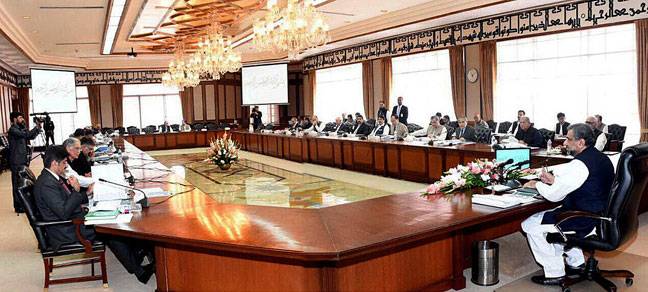ISLAMABAD - Pakistan’s population has reached 207.8 million with an increase of 57 percent since 1998.
In the last 36 years, the population grew by 146.6 percent (since the last census-1981), and a declining trend was observed in the growth rate in the two bigger provinces - Punjab and Sindh. The smaller provinces - (KP, Balochistan) and FATA saw increase in population growth, according to the provisional summary results of the 6th Population and Housing Census-2017.
The provisional census results were approved by the reconstituted Council of Common Interests (CCI) when it met here on Friday. The meeting was chaired by Prime Minister Shahid Khaqan Abbasi with four chief ministers in attendance.
The total population 207.8 million includes all persons residing in the country, including Afghans and other aliens, residing with the local population. It also includes transgenders whose population is now 10,148. Whereas, the population has not included the Afghan refugees living in the refugee village and diplomats.
The results are exclusive of Azad Jammu and Kashmir and Gilgit-Baltistan. The final results will be available next year.
The available breakup reveals that majority of Pakistanis, 63.6 per cent (132.189 million) live in rural areas of the country. This ratio was over 65 per cent as per the last census results in 1998.
The population of the country increases by around 75.4 million people within 19 years since the last headcount in the country.
Transgender
The population census for the first time in the country also included headcount of transgender with the total 10,418 persons, including 7,651 living in urban areas with 0.05 per cent of the total.
The figures reveal 6,709 transgender persons live in Punjab province, including 4,585 in urban areas. Total of 2,527 transgender persons are residing in Sindh, including 301 in rural areas, 913 in Khyber Pakhtunkhwa, including 690 urban areas, 109 in Balochistan, including 69 in urban areas while the FATA counted 27 only in its rural areas and federal capital counted 133 transgender persons, including 81 in urban areas.
Women
The female population against the general impression comparatively saw reduction with 101.314 million, which was 48.8 per cent of the total headcount.
Men
The male population increased to 106.44 million or 51.2 per cent of the total population.
The province-wise figures show Punjab at top with 2.40 per cent average annual growth rate, KP 2.89 per cent, FATA 2.41 per cent, Sindh 2.41 per cent, Balochistan 3.37 per cent and ICT 4.91 per cent.
Punjab
Punjab remains the most populated province, as its population stood at 110.1 million (52.94 per cent) of the total population. The province’s population in past 19 years increased by 36.4 million, which was 49.4 per cent higher than 1998 statistics.
Sindh
Sindh stood second with 47.886 million people, which is 23 per cent of the total population. Its population grew by 57.3 per cent during past 19 years.
Khyber Pakhtunkhwa (KP)
The population of KP stood at 30.523 million that was 14.69 per cent of the total population. Its population grew by 72 per cent.
Balochistan
Balochistan’s headcount was recorded at 12.344 million of the total population. In past 19 years, the population of this province grew by 5.8 million.
FATA:
The population of Federally Administrated Tribal Areas stood at 5.1 million. There was 1.8 million increase in the population of the autonomous region.
ICT:
Islamabad Capital Territory population (ICT) stood at two million, which was 1.2 million higher than the 1998 census.
The provisional results further showed the trend of urbanisation in Pakistan as 36.38 per cent of the population living in urban areas. The comparative position of provinces and areas shows similar trend in urban population with a slight higher increase in Punjab.
On the other hand, a significant decrease has been observed in the percentage of urban population in ICT which went down from 65.72 per cent to 50.58 per cent, indicating growth occurred in the rural areas of Islamabad.
Amongst the provinces, Sindh is the most urbanised province, where 52.02 per cent population lives in.
The PBS had conducted this exercise in two phases across Pakistan under the supervision of the military.
The population results will be used to determine federating units’ share in federal resources, allocations and delimitation of National Assembly and provincial assemblies’ seats and determination of provincial job quotas.
The census was carried out after a gap of 19 years. The result of the census will be used for delimitation of constituencies, a division of fiscal resources and allocation of civil service quotas among the four federating units.
Pakistan conducted its first census in 1951, second in 1961, third in 1972, fourth census in 1981 and fifth census was conducted in March 1998. According to the Constitution, it is mandatory to conduct census after every 10 years.
The CCI met in the chair of newly-elected Prime Minister also approved additional water supply of 1,200 cusecs to Karachi, formation of a fiscal coordination committee, Kachi canal corruption inquiry and approval of the senior citizens bill and others.






